+Sunshine is one thing Texas has in abundance. Thankfully, there are many colorful shrub options for a full-sun, North Texas garden. Let’s takes look at some of our favorites:
Texas Sage
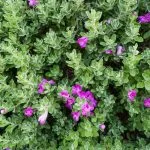
A native Texas plant that thrives in sunlight is the Texas Sage. It boasts lavender or purple blooms in spring, summer, and fall.
This slow-growing shrub is heat and drought tolerant and it can be grown into a hedge. It should be fertilized yearly and grows best in sunny conditions.
Visit our Shrub Trimming service page to learn how we can help keep your hedges beautifully manicured.
Oleander
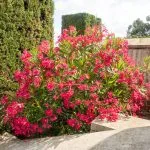
Oleander is an evergreen shrub that grows up to 8-10 ft tall and 4-6 ft wide. It has fragrant blooms that come in red, white, pink, or salmon, depending on the variety.
Oleander is a repeat bloomer, offering flowers from late spring through the fall. It is deer resistant and has average water needs. It can be poisonous, so plant with care if you have children or pets.
Rosemary
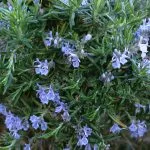
This fragrant evergreen is a favorite in both kitchens and gardens. It grows to about 3 feet high, and provides a sort of spikey “wild” look with woody stocks of needle-like foliage
Rosemary needs very little care, and can be pruned either for culinary or ornamental purposes as often as you’d like. Experts recommend not to remove more than 1/3 of the foliage at a time.
Vitex/Chaste Tree
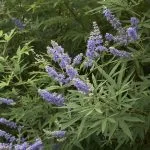
Vitex can be grown as a deciduous shrub or small tree. It produces purple blooms from summer to mid-fall. It will bloom again if dead blooms are removed.
Vitex tolerates drought well and blooms best in heat, making it ideal for Texas summers. It thrives in well drained soil and it can grow up to 12-15 ft tall. It is also deer resistant.
Fringe Flower/Loropetalum
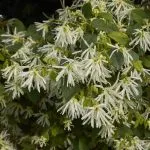
An attractive evergreen, sun loving shrub is the Fringe Flower. Its name comes from the delicate, fringe-like pink blooms it produces mid March to April, and then sporadically throughout the rest of the year.
RELATED TIP: What Evergreen Trees Grow Fast?
This shrub can be as small as 1-2 ft or as large as 6-10 ft tall, depending on the variety. The foliage is a deep burgundy to purple in the summer months. It requires well drained soil to prevent rot.
Bridal Wreath Spirea
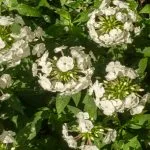
This medium-sized shrub gets its name from the round double flowers it produces, that represent a bridal bouquet. The flowers bloom thickly along the arching branches, and are typically either red or white, depending on the cultivar.
This is a fast-growing shrub that can be considered invasive in some regions. Bridal wreath spireas can tolerate partial shade, but they bloom most verdantly in full sun.
Dwarf Yaupon Holly
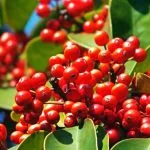
This low-growing shrub is perfect for hedges and ground covering. It grows in a mound shape and does not need to be pruned except for ornamental preferences.
Dwarf yaupon hollies produce small red berries throughout the fall and winter, which attract butterflies all year. The foliage is small and dense, beginning as bright green and growing darker as it matures.
Nandina
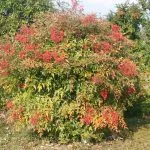
Another evergreen shrub to consider is the Nandina. It shows compact growth and is 18-24 inches tall. It is a low maintenance plant used for borders or hedges.
In the summer, nandina creates yellow, orange, and green foliage, and then deep reds and burgundies in the fall. It displays the best colors when planted in full sun. It is drought tolerant once it is established and is insect, deer, and disease resistant.
Crape Myrtle
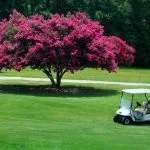
Another popular Texas plant is the Crape Myrtle. The Crape Myrtle can be grown as a shrub or tree, depending on how it’s pruned. Pruning can be difficult so be sure to research well or have a professional do it. It is an evergreen with long lasting, colorful flowers in the summer, and foliage that maintains its color in the fall.
Crape Myrtle comes in a large array of varieties from dwarf plants to tall trees. It has a wide range of colors as well. It can be used as a hedge or barrier plant. It requires full sun and is adaptable to most types of soil.
Rose Creek Abelia
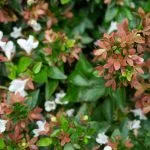
This evergreen shrub offers a soft splash of color to any lawn or garden. It has a compact growth pattern, making it ideal for hedges or large containers.
RELATED TIP: How Fast do Emerald Green Arborvitae Grow?
Rose creek abelia produces white trumpetlike petals that resemble honeysuckle, which are skirted by dusty pink sepals. The glossy green foliage with red stems creates a lovely color contrast.
Want to know more about evergreens? Check out our list of Best Evergreen Shrubs for Texas.
Kaleidoscope Abelia
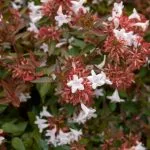
The petals of the kaleidoscope abelia are white just like those of its cousin, but they’re a bit less tubular. This shrub attracts birds and butterflies, and is wonderfully resistant to pests and diseases.
Kaleidoscope abelia has vibrant foliage, often displaying a contrast of colors, such as a fiery orange ages with deep green in the center. As an evergreen, the foliage remains intact year-round, changing colors with the seasons.
Rose of Sharon
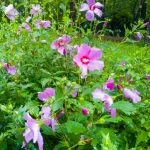
Rose of Sharon is a type of hibiscus plant with showy, summer flowers. It comes in white, pink, red, and purple varieties. The Rose of Sharon attracts birds, butterflies, and other pollinators. It is sometimes used as a privacy border, growing 9-12 ft tall and up to 10 ft wide. It blooms in late summer to early fall.
Rose of Sharon is tolerant of heat, humidity, and air pollution, and reasonably drought tolerant, making it a good option for North Texas gardens. It grows best in rich, well drained soil that is slightly acidic.
Butterfly Bush
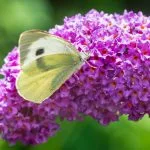
This fast-growing shrub produces long clusters of tiny, fragrant blossoms that are known to attract butterflies. The flowers range from deep purple and lavender, to white and light pink.
Some species of the butterfly bush are known to be invasive, so check the specific type you’re purchasing if you plan to plant it adjacent to established vegetation. On the other hand, if you wish to quickly fill an empty hedge, this plant will propagate quickly.
Evergreen Lawn & Landscape is always happy to assist with your landscaping needs.
These are several options for color and blooms in a sunny, North Texas garden or yard. Planting according to your sun exposure is the best way to have healthy, thriving plants.

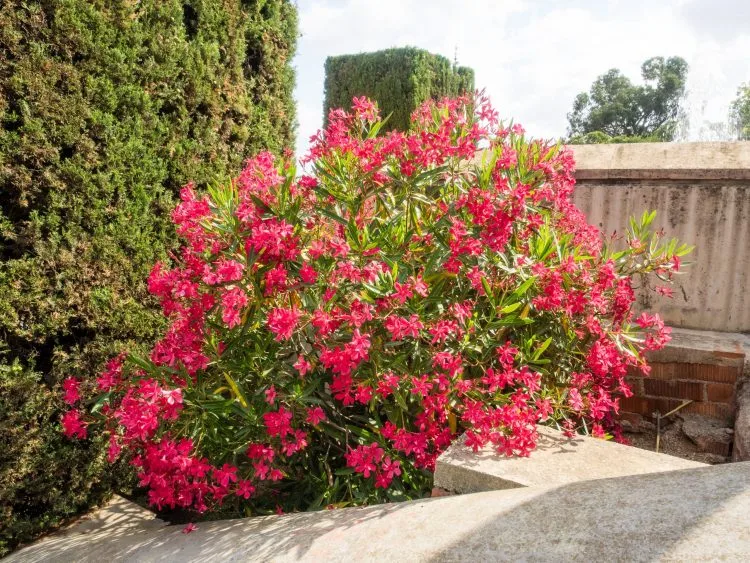

Comments (0)
Thanks for your comment!
Thanks for your feedback! Your comments have been successfully submitted! Please note, all comments require admin approval prior to display.
Error submitting comment!
There is a problem with your comment, please see below and try again.